Impossible, I’ve worried since this assignment came in, to write a Year in Reading about a grief-filled time in which reading for pleasure was often impossible. Months of the year are a recursive fog with no memory formation whatsoever. But 2022 was also a year where, paradoxically, reading was the best escape I found.

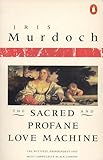 I spent a month writing my novel at the Hawthornden Residency in Scotland, where I read, among other things, Olga Tocarczuk’s The Books of Jacob, which is a challenging, brilliant work, maybe my favorite of the year (Jennifer Croft’s translation is brilliant as well). No talking is allowed in the castle during daytime, and there was unlimited coffee and small biscuits, and I sat for hours in an overstuffed armchair marveling at the formal shape of the tome, especially the section when the lead—real-life messiah figure Jacob Frank—is imprisoned in a monastery. I was simultaneously reading Matthew Lewis’s The Monk, a bizarre 1796 Gothic misadventure, for my book club, and the parallels between the two works and my environment set me a bit dreamy. One morning, I learned that Iris Murdoch had been a visitor to the castle, and that she’d likely sat where I was sitting with the Tocarczuk. In homage, I read The Sacred and Profane Love Machine, which is hilarious and weird and my sixth favorite Iris Murdoch novel, which makes it one of the best books I’ve ever read. (Updated tentative Iris ranking 1. The Sea, The Sea 2. A Severed Head 3. The Black Prince 4. The Bell 5. Under the Net.)
I spent a month writing my novel at the Hawthornden Residency in Scotland, where I read, among other things, Olga Tocarczuk’s The Books of Jacob, which is a challenging, brilliant work, maybe my favorite of the year (Jennifer Croft’s translation is brilliant as well). No talking is allowed in the castle during daytime, and there was unlimited coffee and small biscuits, and I sat for hours in an overstuffed armchair marveling at the formal shape of the tome, especially the section when the lead—real-life messiah figure Jacob Frank—is imprisoned in a monastery. I was simultaneously reading Matthew Lewis’s The Monk, a bizarre 1796 Gothic misadventure, for my book club, and the parallels between the two works and my environment set me a bit dreamy. One morning, I learned that Iris Murdoch had been a visitor to the castle, and that she’d likely sat where I was sitting with the Tocarczuk. In homage, I read The Sacred and Profane Love Machine, which is hilarious and weird and my sixth favorite Iris Murdoch novel, which makes it one of the best books I’ve ever read. (Updated tentative Iris ranking 1. The Sea, The Sea 2. A Severed Head 3. The Black Prince 4. The Bell 5. Under the Net.)

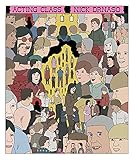

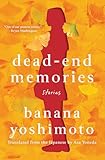
I’m reading for the National Book Critics Circle this year, and so many of the ensuing books arrived at my doorstep with no advance warning. Hundreds of books did. More boxes than I’ve ever seen. My landlord complains. The recycling truck lingers a bit too long outside my house, vibrating with ecological judgment. Almost every day, I’d open a package and read a few pages of whatever was inside. Sometimes, I’d get caught. Two of my favorites were graphic works, each of which consumed an afternoon. Ducks: Two Years in the Oil Sands, by Kate Beaton, is harrowing and gorgeous. I’d loved Beaton’s Hark! A Vagrant web comic and was eager to read her memoir of her time working in Northern Canada, but I was blown away by the impact of her work. Nick Drnaso’s Acting Class is funky, disturbing, and unusually moving, with a flatness that belies its complex structure. It was a great year for story collections too—I was particularly drawn to Ling Ma’s Bliss Montage, especially the masterful “Peking Duck,” and to Banana Yoshimoto’s Dead-End Memories, which became a small obsession of mine. How exactly, I ask you now, does Banana Yoshimoto do it? How can she whip up an implausible concoction of sponge cakes and ghosts that leaves me so breathless?



A late breaking edition to the list was the great Percival Everett’s Dr. No, which reminds me of Vonnegut’s Cat’s Cradle: slapstick and entertaining, yes, but also genuinely profound. Another recent pleasure was Samantha Hunt’s The Unwritten Book. In part, Hunt annotates an unfinished book of her father’s, letting her explore the roots of fiction. Hunt’s father’s protagonist has a clumsy boss—in real life, Hunt’s father’s boss, years after Hunt’s father wrote the passage, was diagnosed with Parkinson’s Disease. Could Hunt’s father have been unconsciously recognizing and imprinting the illness into his unpublished prose? A “Sans Soleil” moment!


 Elisa Shua Dusapin is a favorite of mine, and her latest translated work, The Pachinko Parlor, is a diametric opposition to her sparse masterpiece, Winter in Sokcho. Dusapin’s imagery of a desolate indoor swimming pool in the sweltering Tokyo summer has stuck with me, as does the novel’s examination of translation in all its forms. I read TPP the same week as Mieko Kawakami’s All The Lovers in the Night, which I also loved—it’s a chilly book, with lots of fascinating doubling, and the lead’s co-worker is one of the great reagent supporting characters of recent vintage. Scholastique Mukasonga is, of course, a genius, and her Kibogo lives up to the standard of her previous books: a nesting doll of inherited folktales that raises questions about storytelling’s role in the world.
Elisa Shua Dusapin is a favorite of mine, and her latest translated work, The Pachinko Parlor, is a diametric opposition to her sparse masterpiece, Winter in Sokcho. Dusapin’s imagery of a desolate indoor swimming pool in the sweltering Tokyo summer has stuck with me, as does the novel’s examination of translation in all its forms. I read TPP the same week as Mieko Kawakami’s All The Lovers in the Night, which I also loved—it’s a chilly book, with lots of fascinating doubling, and the lead’s co-worker is one of the great reagent supporting characters of recent vintage. Scholastique Mukasonga is, of course, a genius, and her Kibogo lives up to the standard of her previous books: a nesting doll of inherited folktales that raises questions about storytelling’s role in the world.
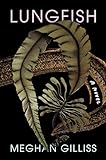

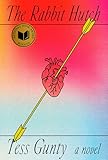
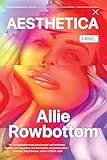
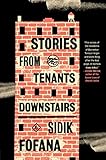 More: I spent months ranting about the wonder of Megan Gilliss’s Lungfish, which teems with life, and see no reason to stop now. I loved A New Name: Septology VI-VII—the poetic flights of Jon Fosse’s prose are astounding. I also loved Merve Emre’s writing about Fosse (Merve’s criticism was one of the consistent highlights of this year in reading). I was the interlocutor for one of the launch events for Tess Gunty’s The Rabbit Hutch, and as I read and re-read it, the strength of the novel’s construction and the empathetic connection Gunty had forged with the reader wowed me. Allie Rowbottom’s Aesthetica is both disturbing and cool, and opened my eyes to aspects of personal-image-creation that I had not closely contemplated. I first read and loved segments from Sidik Fofana’s potent Stories from the Tenants Downstairs years ago, when we were graduate school buddies, and I was very moved to finally see them out in the greater world.
More: I spent months ranting about the wonder of Megan Gilliss’s Lungfish, which teems with life, and see no reason to stop now. I loved A New Name: Septology VI-VII—the poetic flights of Jon Fosse’s prose are astounding. I also loved Merve Emre’s writing about Fosse (Merve’s criticism was one of the consistent highlights of this year in reading). I was the interlocutor for one of the launch events for Tess Gunty’s The Rabbit Hutch, and as I read and re-read it, the strength of the novel’s construction and the empathetic connection Gunty had forged with the reader wowed me. Allie Rowbottom’s Aesthetica is both disturbing and cool, and opened my eyes to aspects of personal-image-creation that I had not closely contemplated. I first read and loved segments from Sidik Fofana’s potent Stories from the Tenants Downstairs years ago, when we were graduate school buddies, and I was very moved to finally see them out in the greater world.
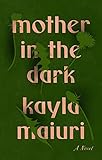
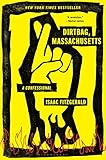

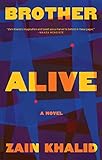

 Kayla Maiuri’s family drama Mother in the Dark ruined a night of sleep as it sped towards its irresistible climax. Isaac Fitzgerald’s Dirtbag, Massachusetts is at once deeply personal and revelatory about the functions of masculinity. Vauhini Vara’s The Immortal King Rao is a brilliant high-tech thriller, which doesn’t surprise me, because her brilliant essay “Ghosts” had already demonstrated that her prose is a unique melding of science and heart. Zain Khalid’s Brother Alive is ambitious and clever, wheeling its way through different perspectives with unusual skill and humanity. Free Indirect: The Novel in a Postfictional Age, by Timothy Bewes, is a must-read critique of the connections between thought and form in contemporary fiction. And Alia Trabucco Zeran’s When Women Kill: Four Crimes Retold is a marvelous critical analysis of four Chilean women who committed murder.
Kayla Maiuri’s family drama Mother in the Dark ruined a night of sleep as it sped towards its irresistible climax. Isaac Fitzgerald’s Dirtbag, Massachusetts is at once deeply personal and revelatory about the functions of masculinity. Vauhini Vara’s The Immortal King Rao is a brilliant high-tech thriller, which doesn’t surprise me, because her brilliant essay “Ghosts” had already demonstrated that her prose is a unique melding of science and heart. Zain Khalid’s Brother Alive is ambitious and clever, wheeling its way through different perspectives with unusual skill and humanity. Free Indirect: The Novel in a Postfictional Age, by Timothy Bewes, is a must-read critique of the connections between thought and form in contemporary fiction. And Alia Trabucco Zeran’s When Women Kill: Four Crimes Retold is a marvelous critical analysis of four Chilean women who committed murder.


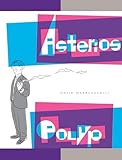








 One additional reading concern was the college writing workshop. Beyond reading, by my rough count, 180 (!) student short stories this year, each of which reminded me that creativity is a renewable wellspring, I had the opportunity to teach some of my favorite books. These were my homework, a recurring deadline from myself, and the syllabus offered some particular lessons: Garth Greenwell’s Cleanness for language and emotional brilliance; T Kira Madden’s Long Live The Tribe of Fatherless Girls for surprising essayistic forms; David Mazzuchelli’s Asterios Polyp for idiomatic image creation; Rachel Cusk’s Outline for writing about oneself through others; Brandon Taylor’s Filthy Animals for making stories feel like a part of a larger world; Stephen Zweig’s Chess Story for obsession; Aysegul Savas’s White on White for the ecstasy of ekphrasis; Raven Leilani’s Luster for accelerating plot against reader expectation; Katie Kitamura’s Intimacies for balancing the heat of story with the coolness of prose; Joshua Cohen’s The Netanyahus for the hard work that goes into humor; Benjamin Labatut’s When We Cease to Understand the World for the gaps between fiction and nonfiction; Rainer Maria Rilke’s The Notebooks of Malte Laurids Brigge for the uncanny; Murakami‘s “Drive My Car” for the power of cinematic adaptation.
One additional reading concern was the college writing workshop. Beyond reading, by my rough count, 180 (!) student short stories this year, each of which reminded me that creativity is a renewable wellspring, I had the opportunity to teach some of my favorite books. These were my homework, a recurring deadline from myself, and the syllabus offered some particular lessons: Garth Greenwell’s Cleanness for language and emotional brilliance; T Kira Madden’s Long Live The Tribe of Fatherless Girls for surprising essayistic forms; David Mazzuchelli’s Asterios Polyp for idiomatic image creation; Rachel Cusk’s Outline for writing about oneself through others; Brandon Taylor’s Filthy Animals for making stories feel like a part of a larger world; Stephen Zweig’s Chess Story for obsession; Aysegul Savas’s White on White for the ecstasy of ekphrasis; Raven Leilani’s Luster for accelerating plot against reader expectation; Katie Kitamura’s Intimacies for balancing the heat of story with the coolness of prose; Joshua Cohen’s The Netanyahus for the hard work that goes into humor; Benjamin Labatut’s When We Cease to Understand the World for the gaps between fiction and nonfiction; Rainer Maria Rilke’s The Notebooks of Malte Laurids Brigge for the uncanny; Murakami‘s “Drive My Car” for the power of cinematic adaptation.
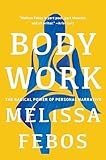

 Most of all, this year, though, I read myself. Perhaps that’s one function of turning temporarily fetal. For a bit, I was all I could see. And then friends sent me books: Melissa Febos’s Body Work, Joan Didion’s The Year of Magical Thinking, Peter Handke’s A Sorrow Beyond Dreams. I read myself in them, which let me learn how to read again.
Most of all, this year, though, I read myself. Perhaps that’s one function of turning temporarily fetal. For a bit, I was all I could see. And then friends sent me books: Melissa Febos’s Body Work, Joan Didion’s The Year of Magical Thinking, Peter Handke’s A Sorrow Beyond Dreams. I read myself in them, which let me learn how to read again.
The post A Year in Reading: Adam Dalva appeared first on The Millions.
Source : A Year in Reading: Adam Dalva










